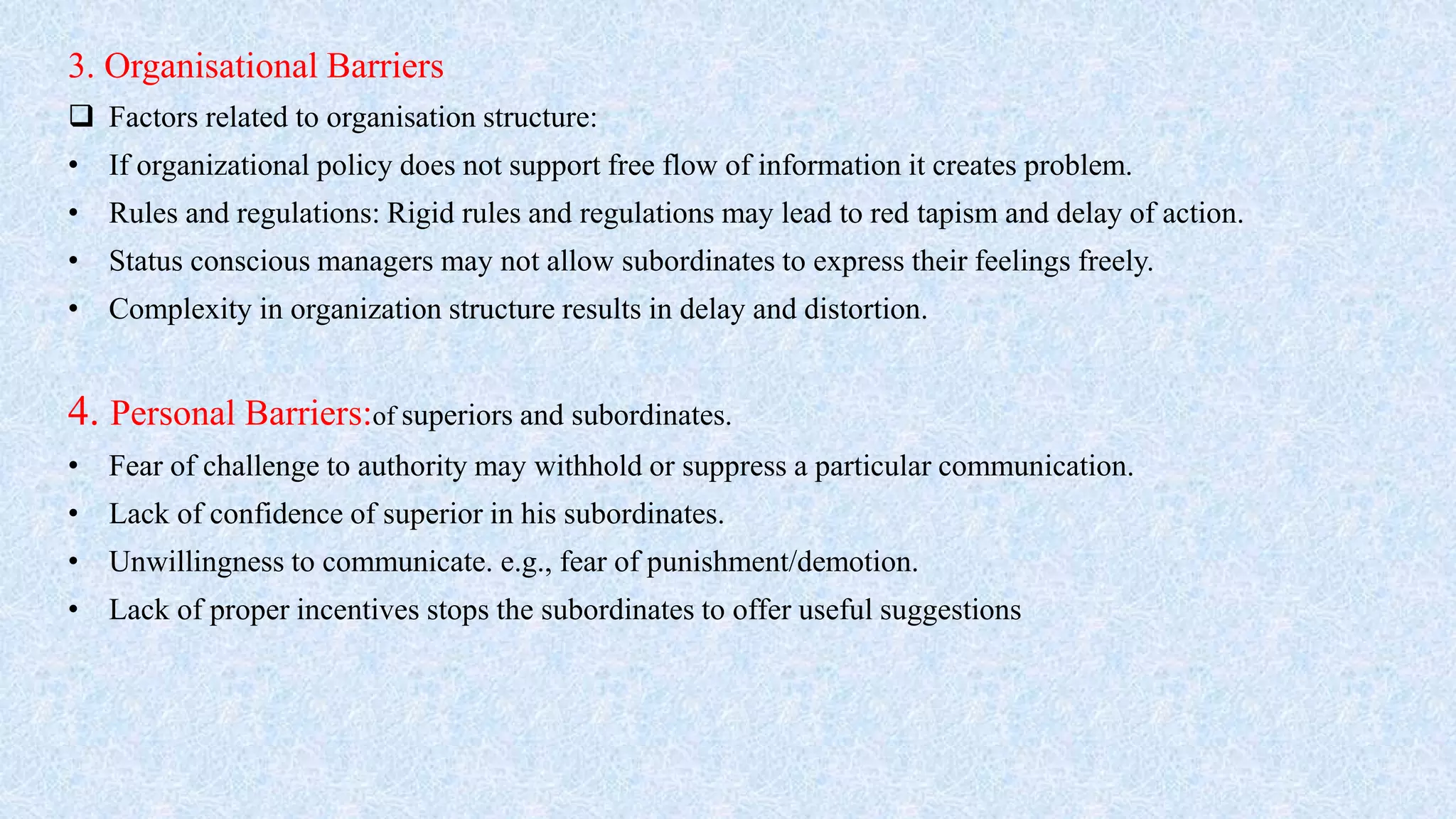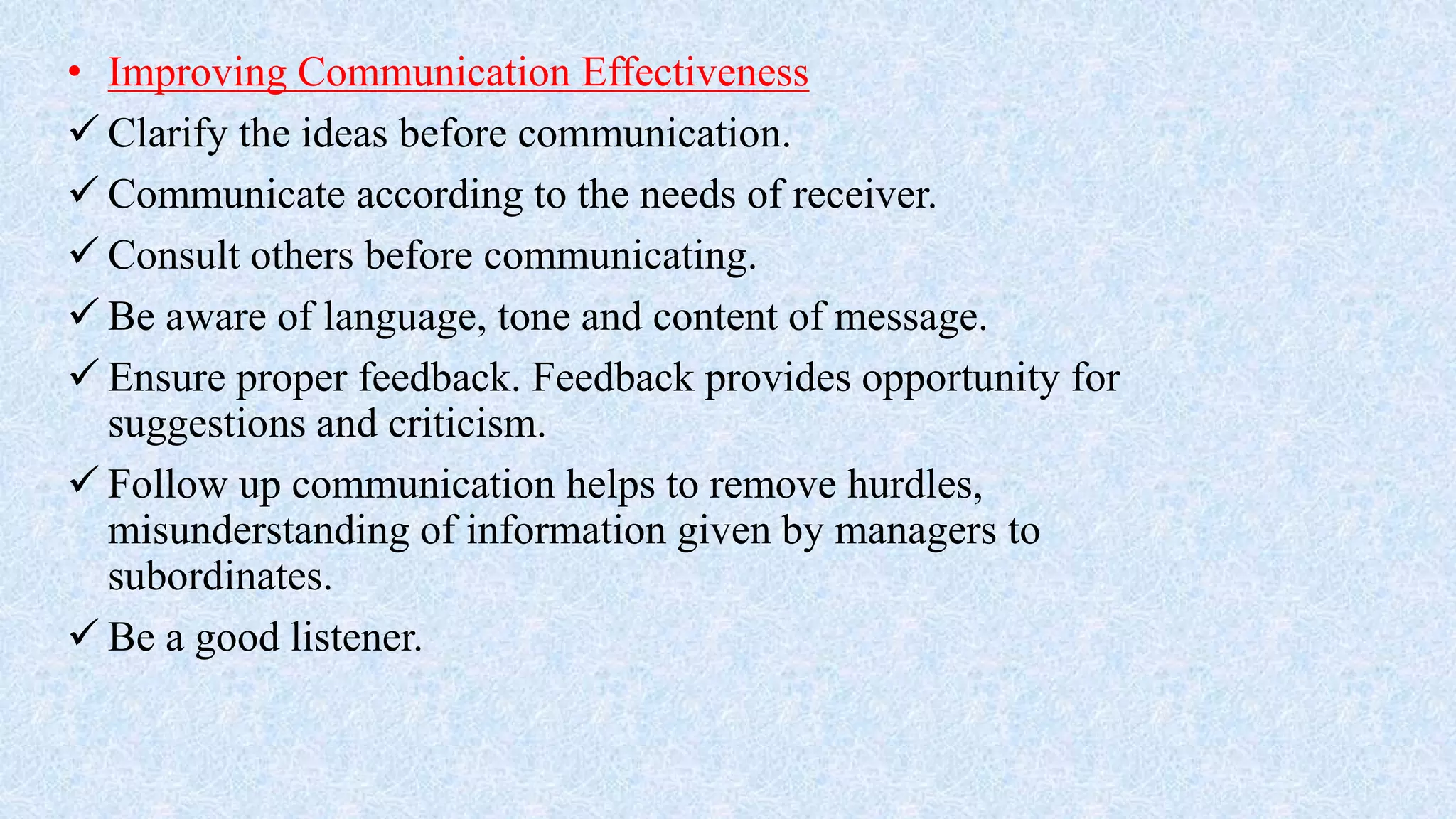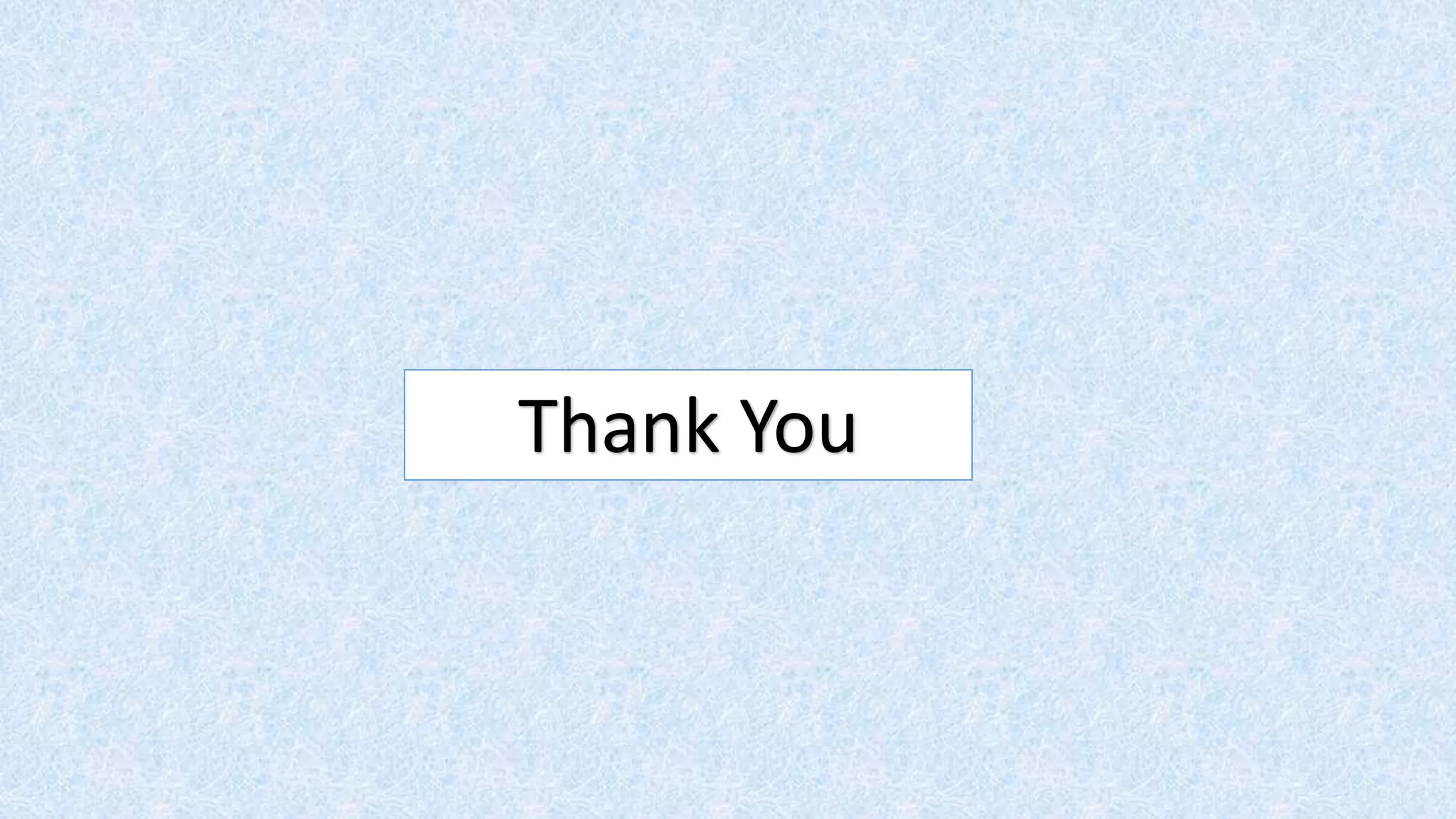This document provides information about the directing function of management. It discusses key elements of directing like supervision, motivation, leadership and communication. Supervision involves observing subordinates' work and helping them solve problems. Motivation stimulates employees to work with enthusiasm for organizational goals. Leadership influences employees to work for mutual objectives. Communication is the exchange of information between people to reach understanding. Directing initiates action, takes place at all levels, and flows from top to bottom in the organizational hierarchy. It is important for integrating employee efforts, facilitating change and providing stability in the organization. The document also discusses different leadership styles like autocratic, democratic and laissez-faire.




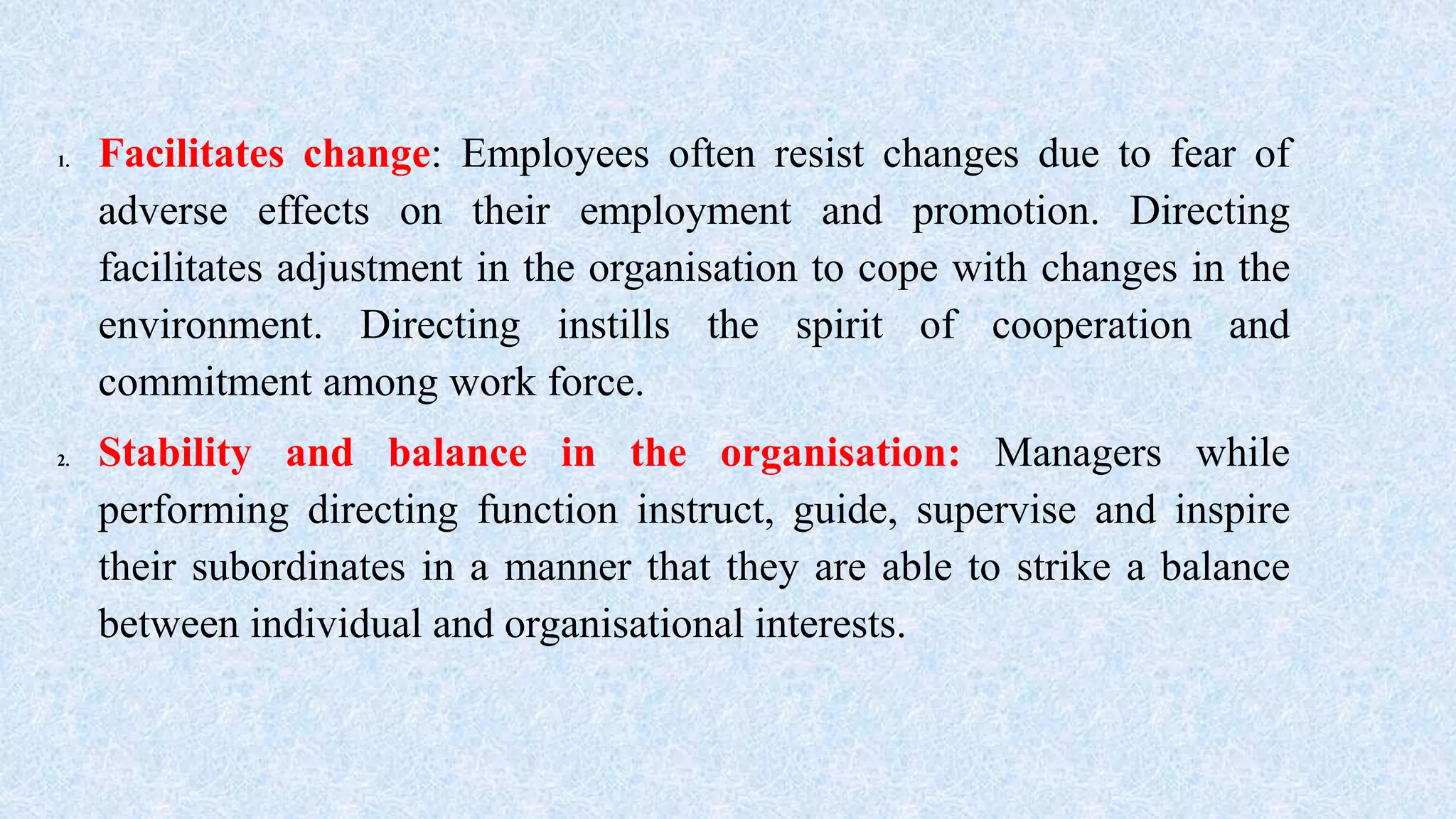

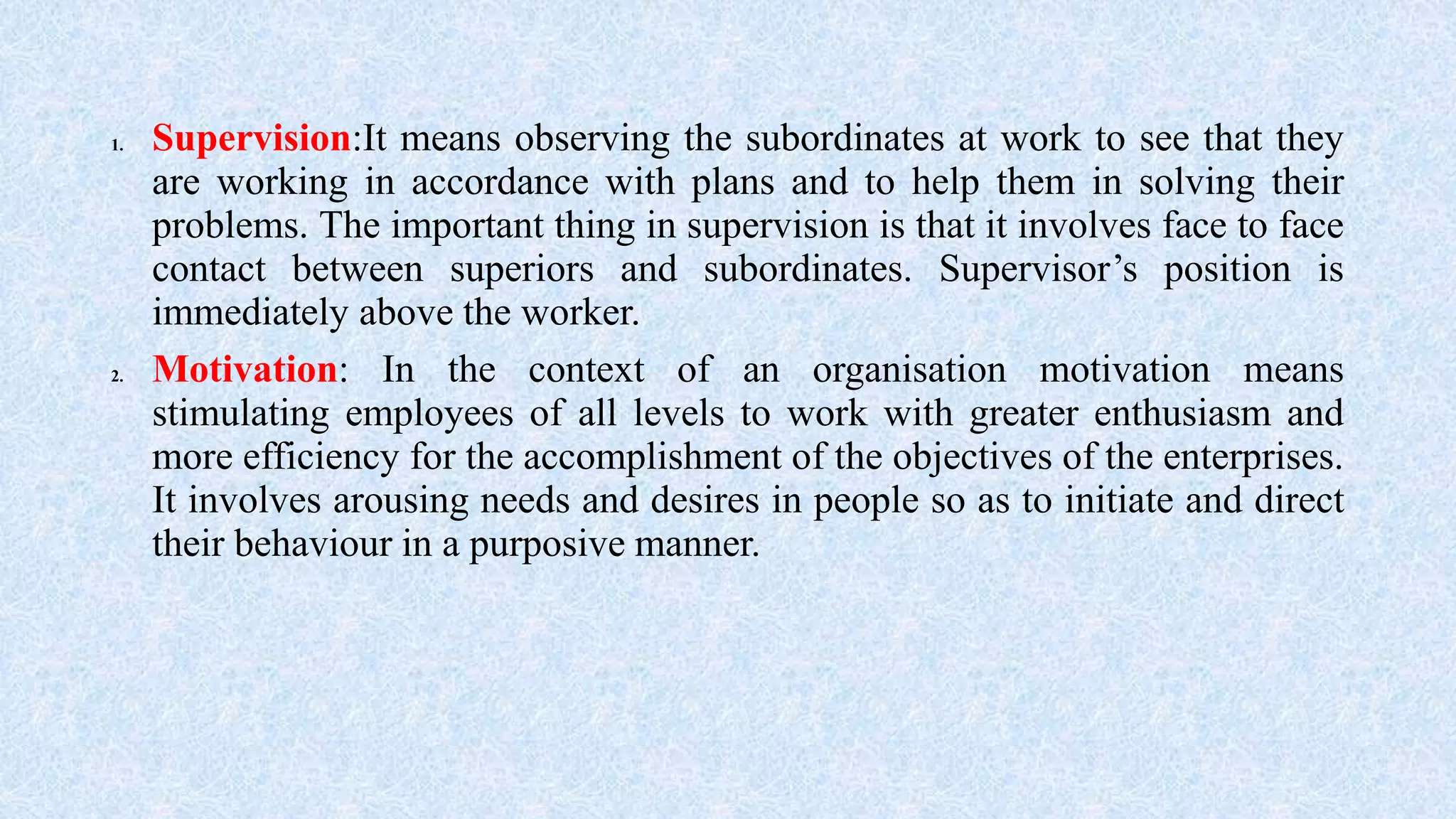
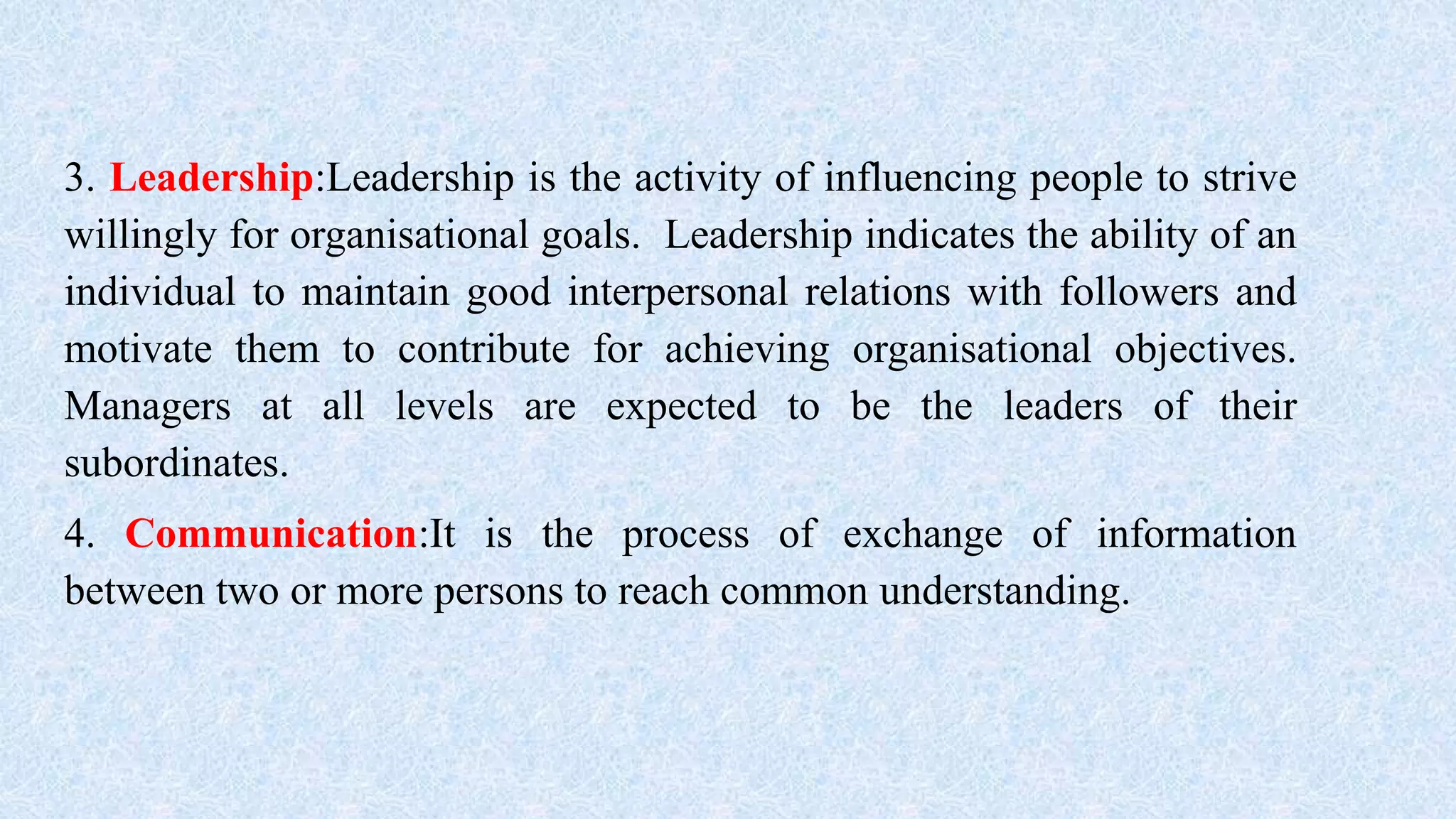
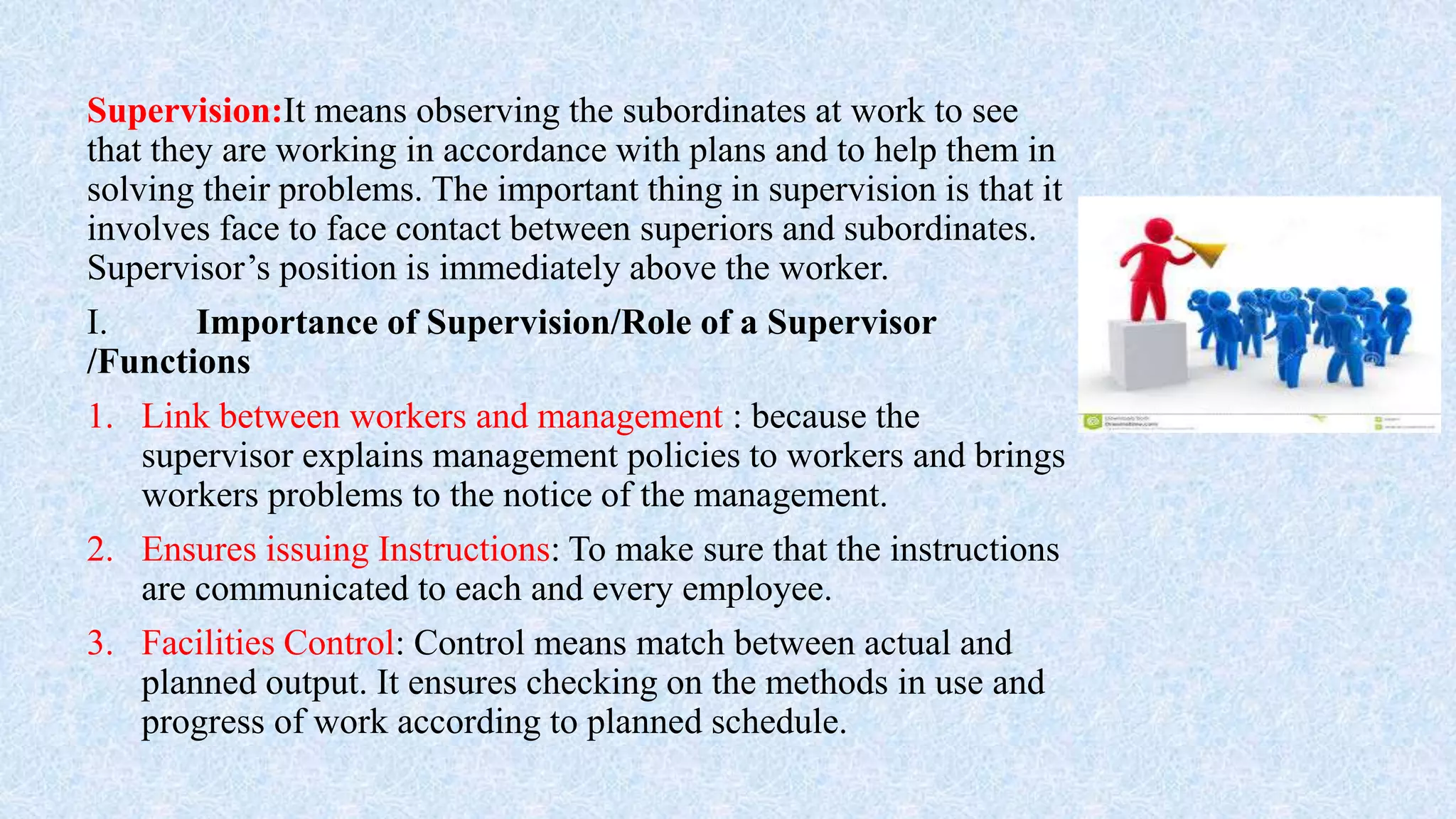
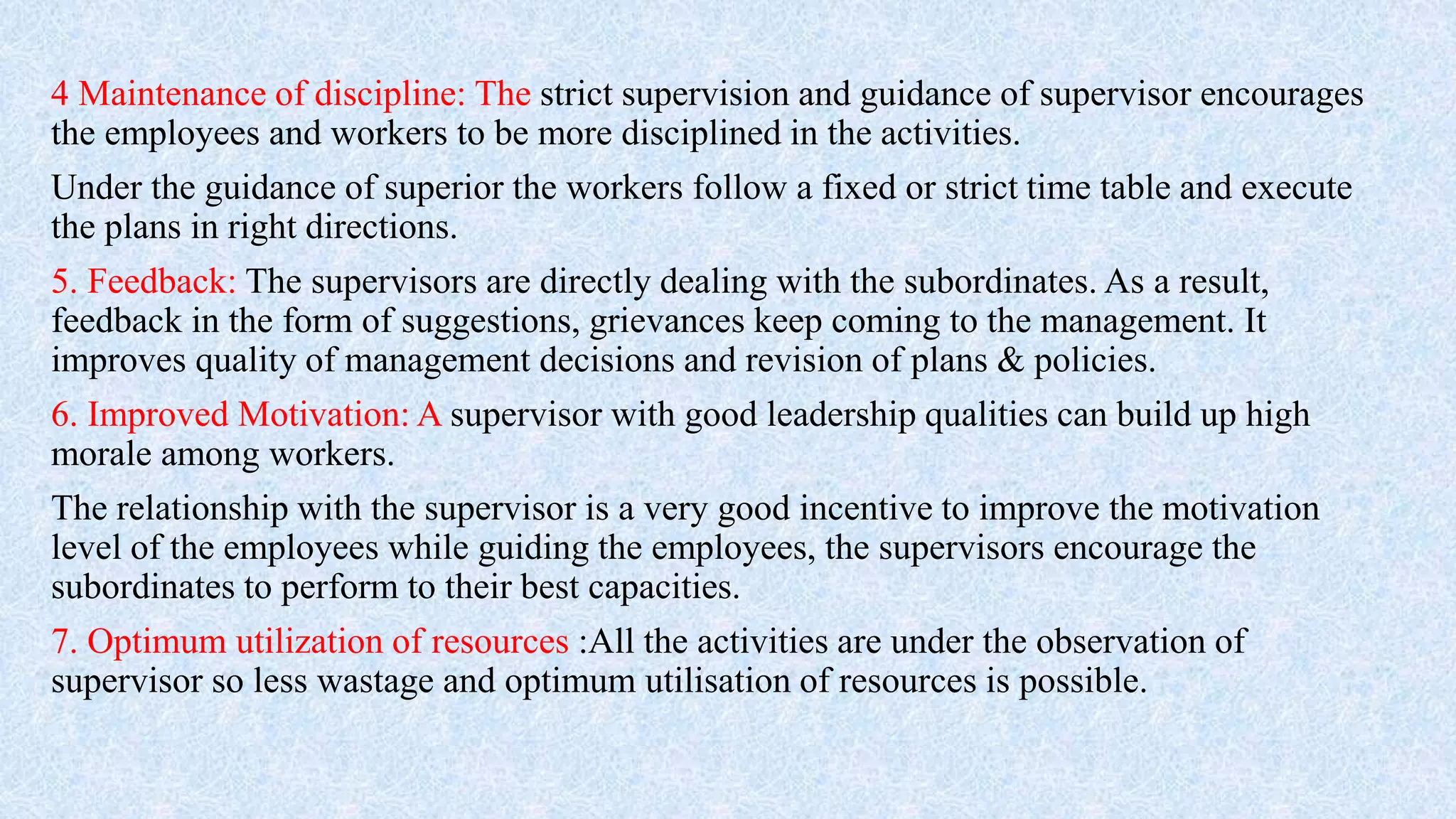


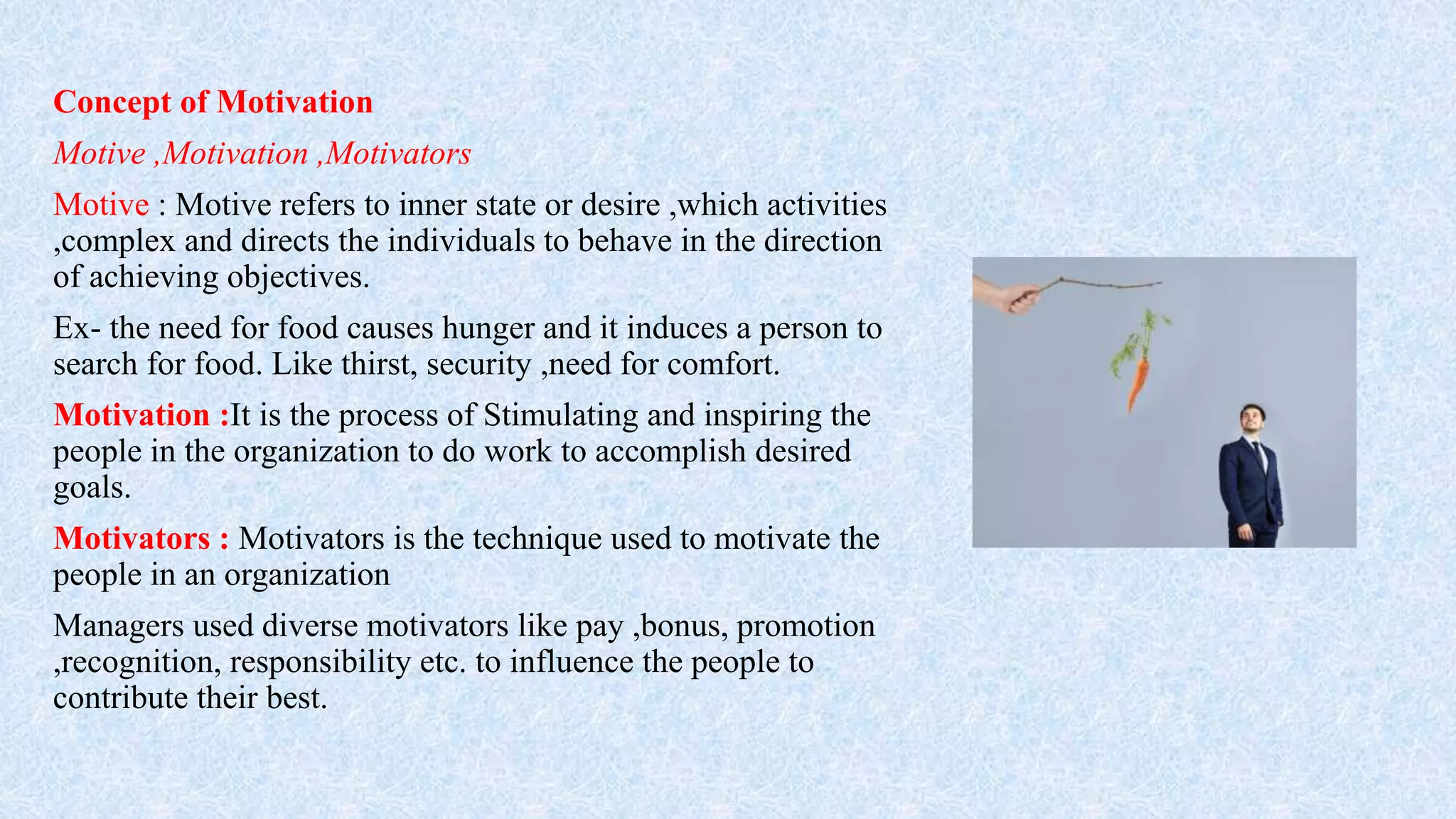
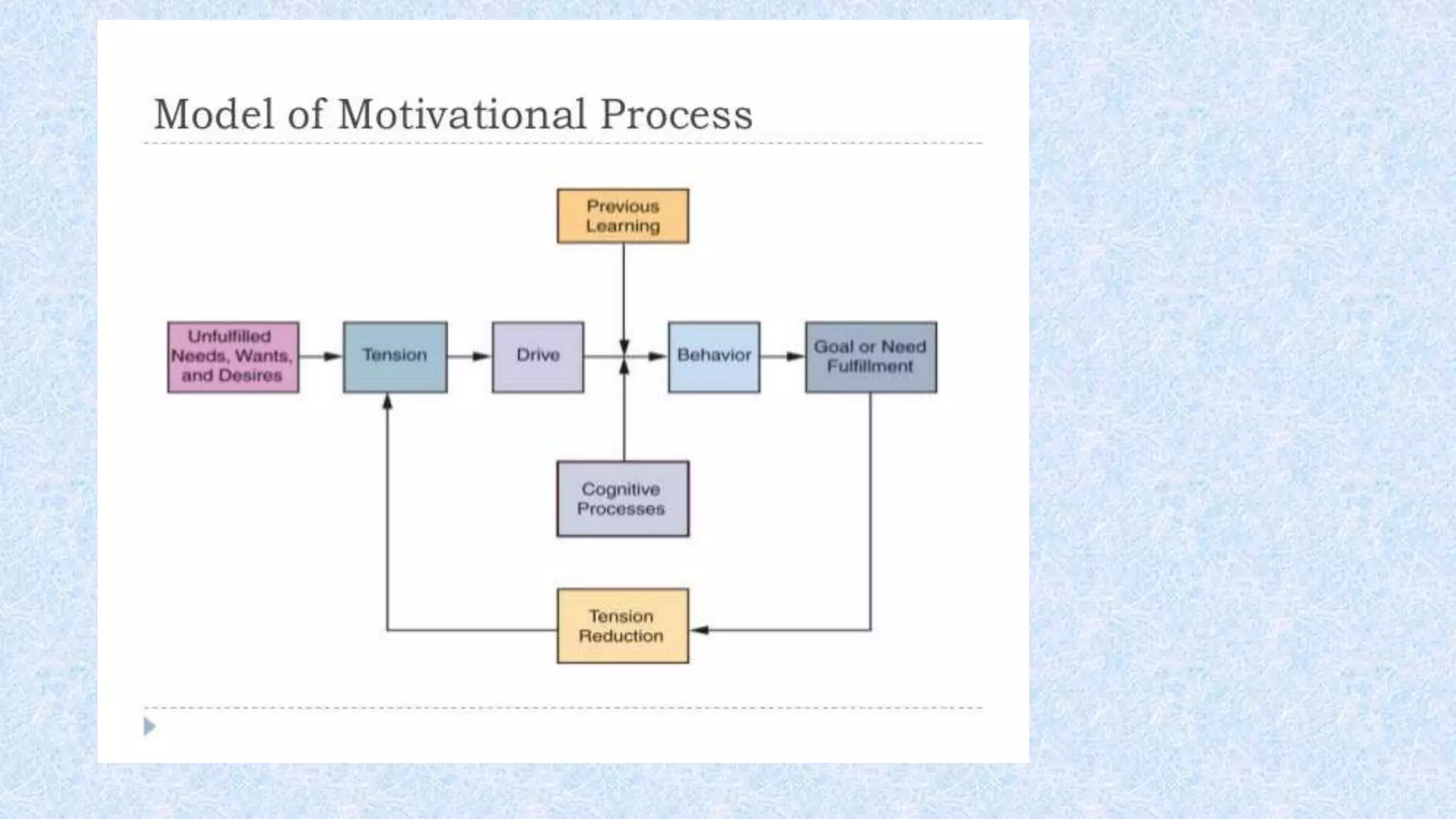
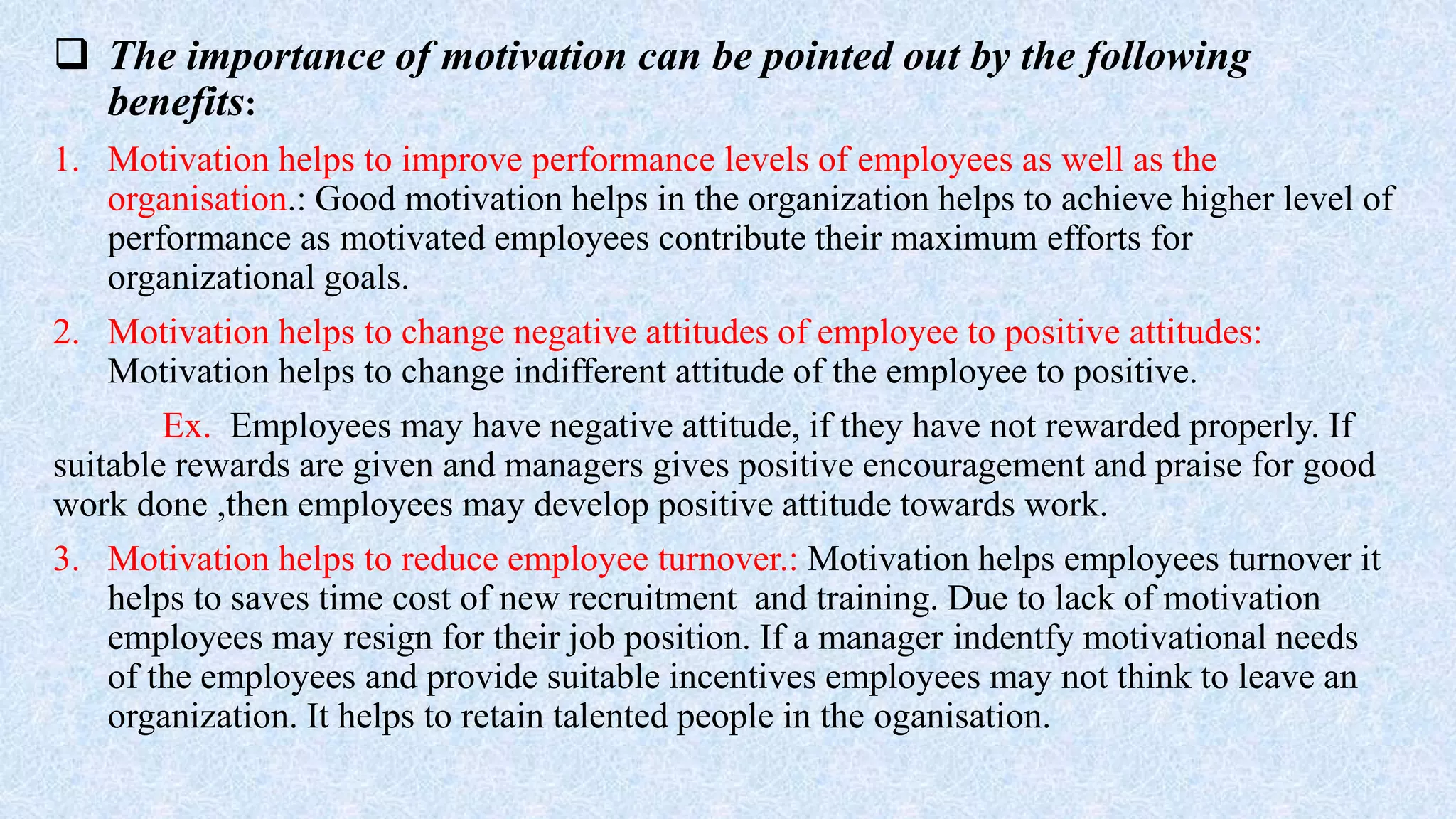
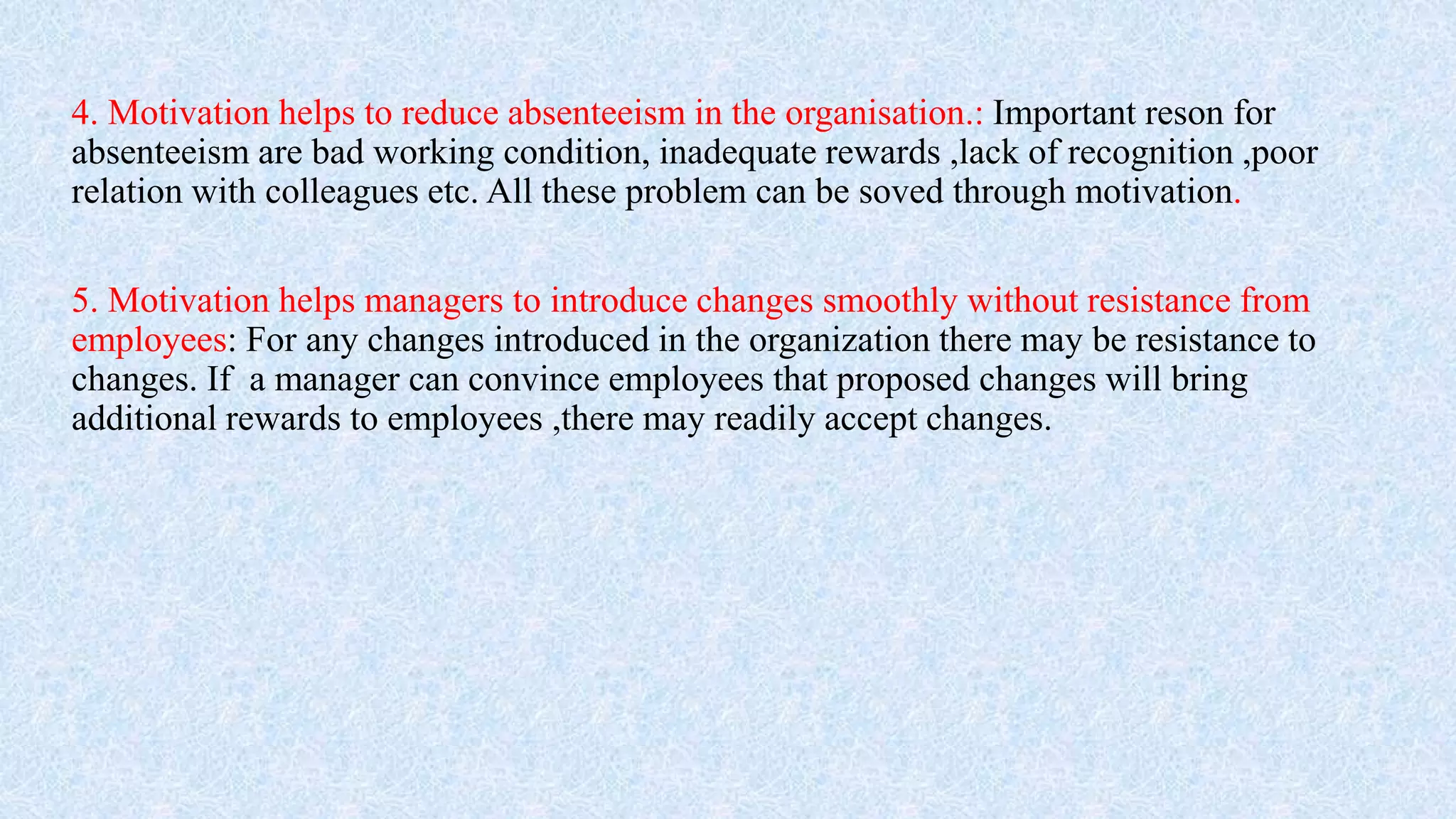
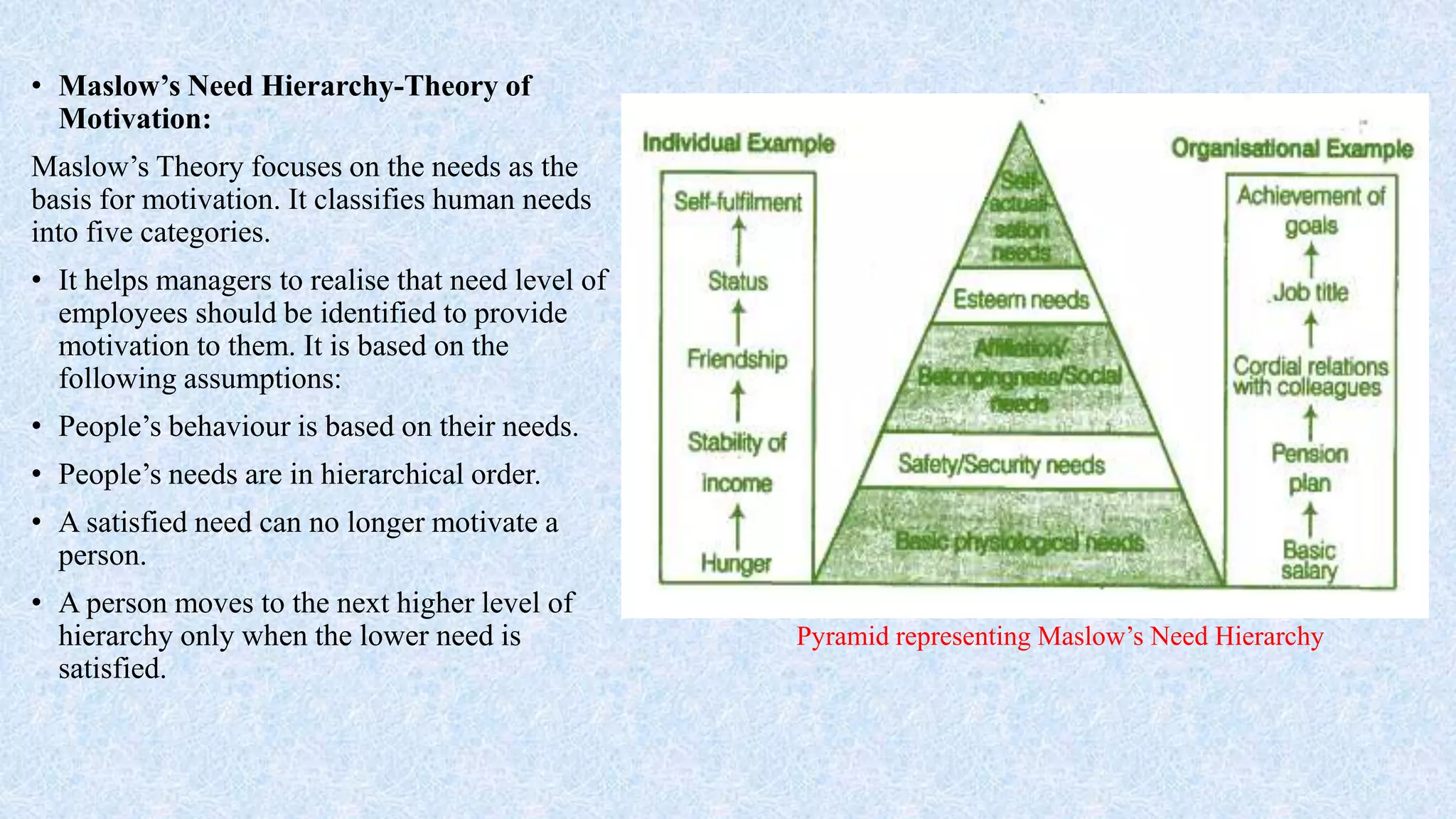
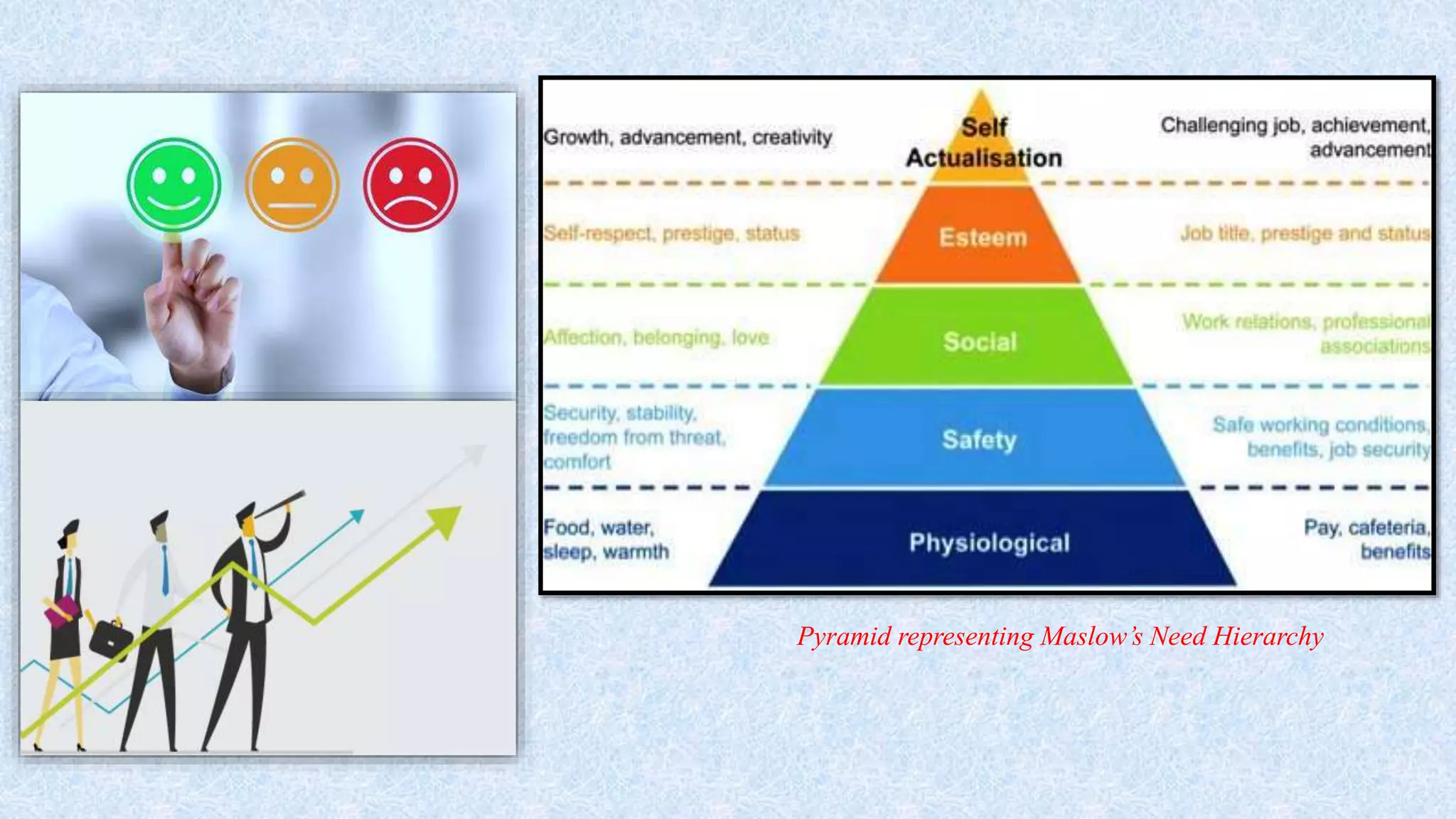
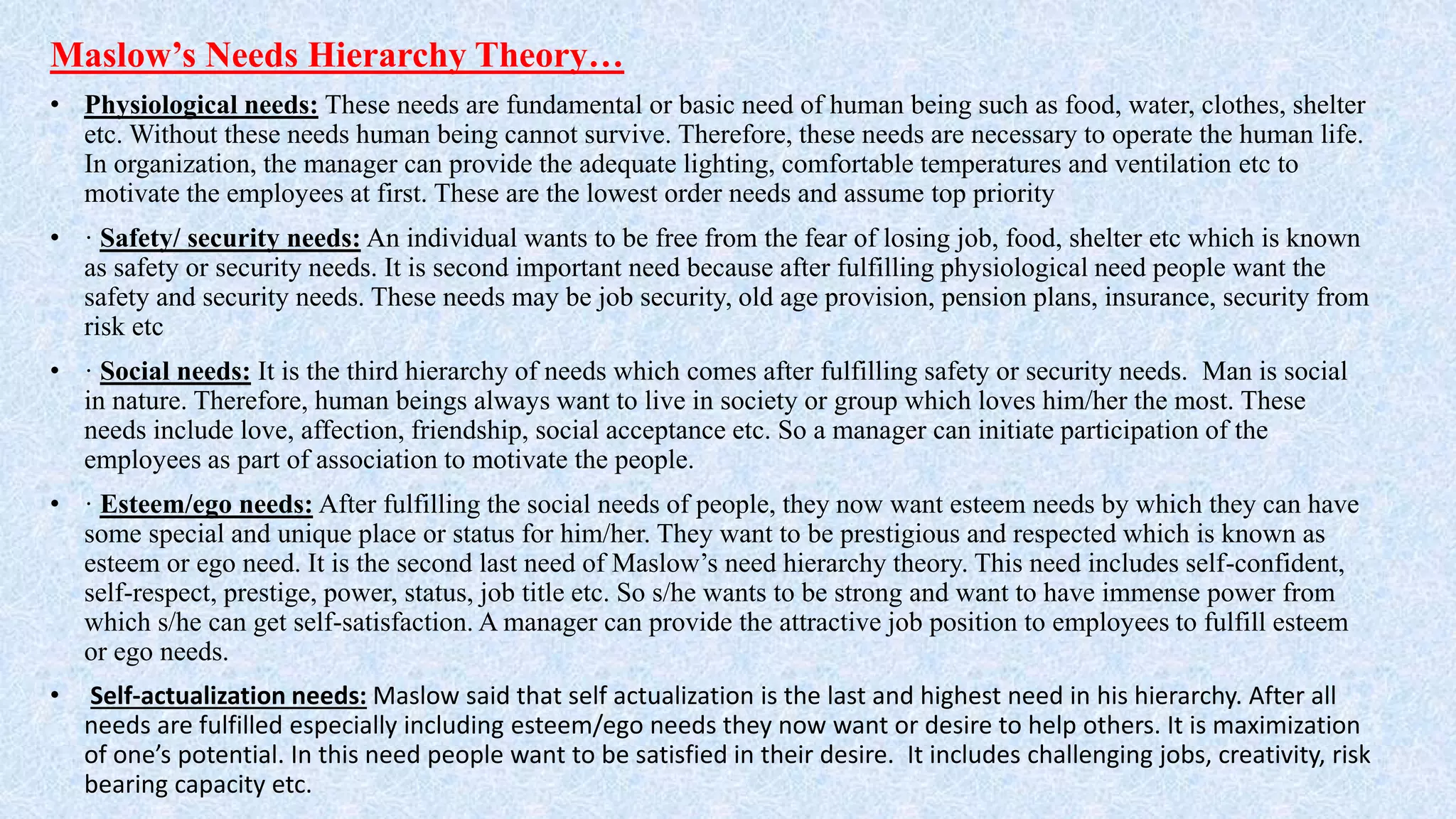


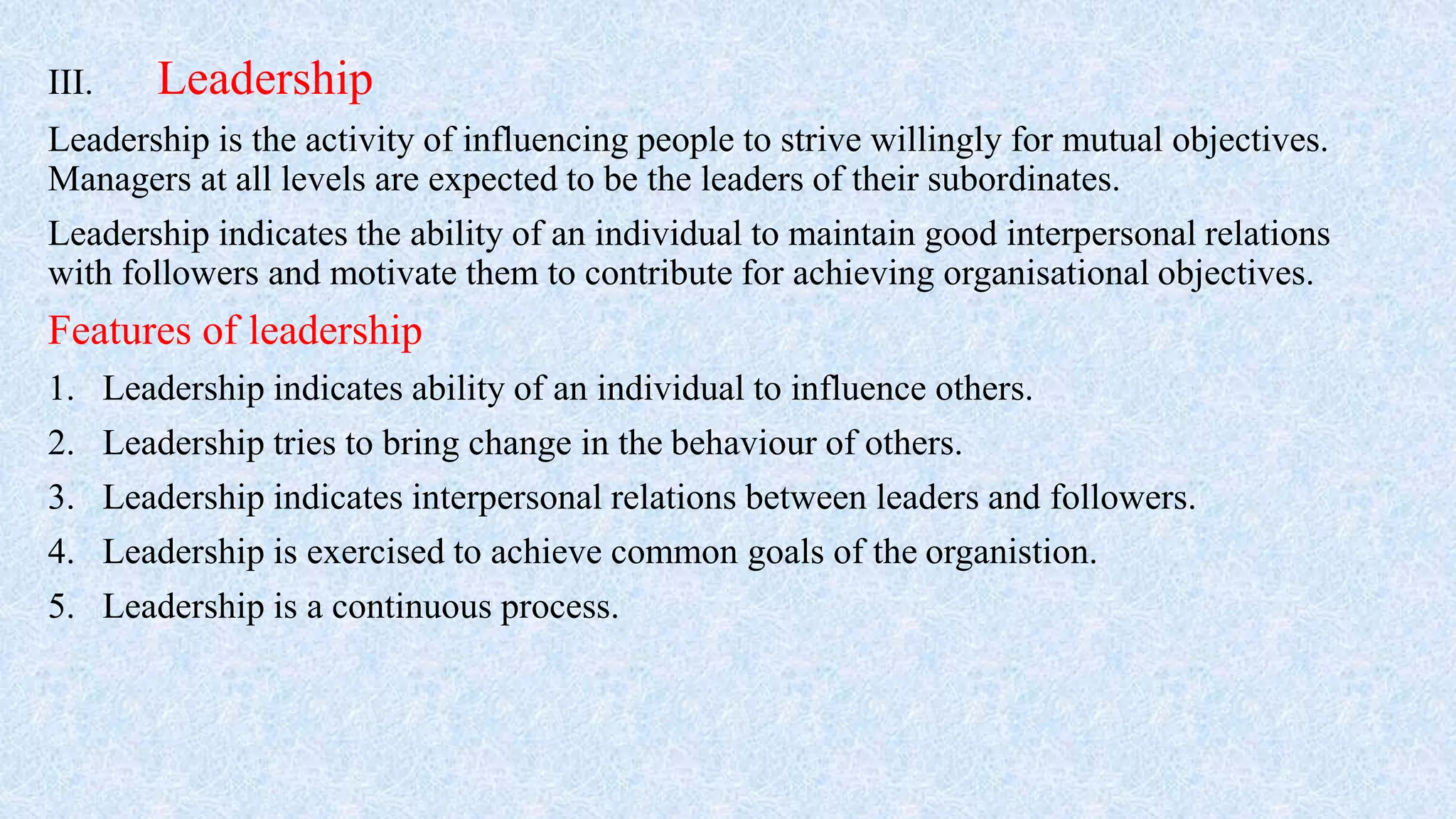


![3.Laissez Faire or Free Rein Leader
• Free rein leader gives complete freedom to the subordinates. Such a leader avoids use of
power. He depends largely upon the group to establish its own goals and work out its own
problems. Group members work themselves as per their own choice and competence. The
leader exists as a contact man with the outsiders to bring information and the resources which
the group requires for accomplishing the job.
• Note: This is also known as laissez faire which means no interference in the affairs of others.
[French laissez means to let/allow fair means to do].
When should laissez faire/free rein leadership be applied This is an effective style to use when:
• Followers are highly skilled, experienced and educated.
• Followers have pride in their work and the drive to do it successfully on their own.
• Outside experts, such as staff specialists or consultants are being used.
• Followers are trustworthy and experienced.
This style should NOT be used when:
• Followers feel insecure at the non - availability of a leader.
• The leader cannot or will not provide regular feedback to his followers
C
B
E
D
A
A is the leader
(Subordinate - Centered - Leadership)](https://image.slidesharecdn.com/7directing-230901083912-ce3f521c/75/Directing-pptx-25-2048.jpg)
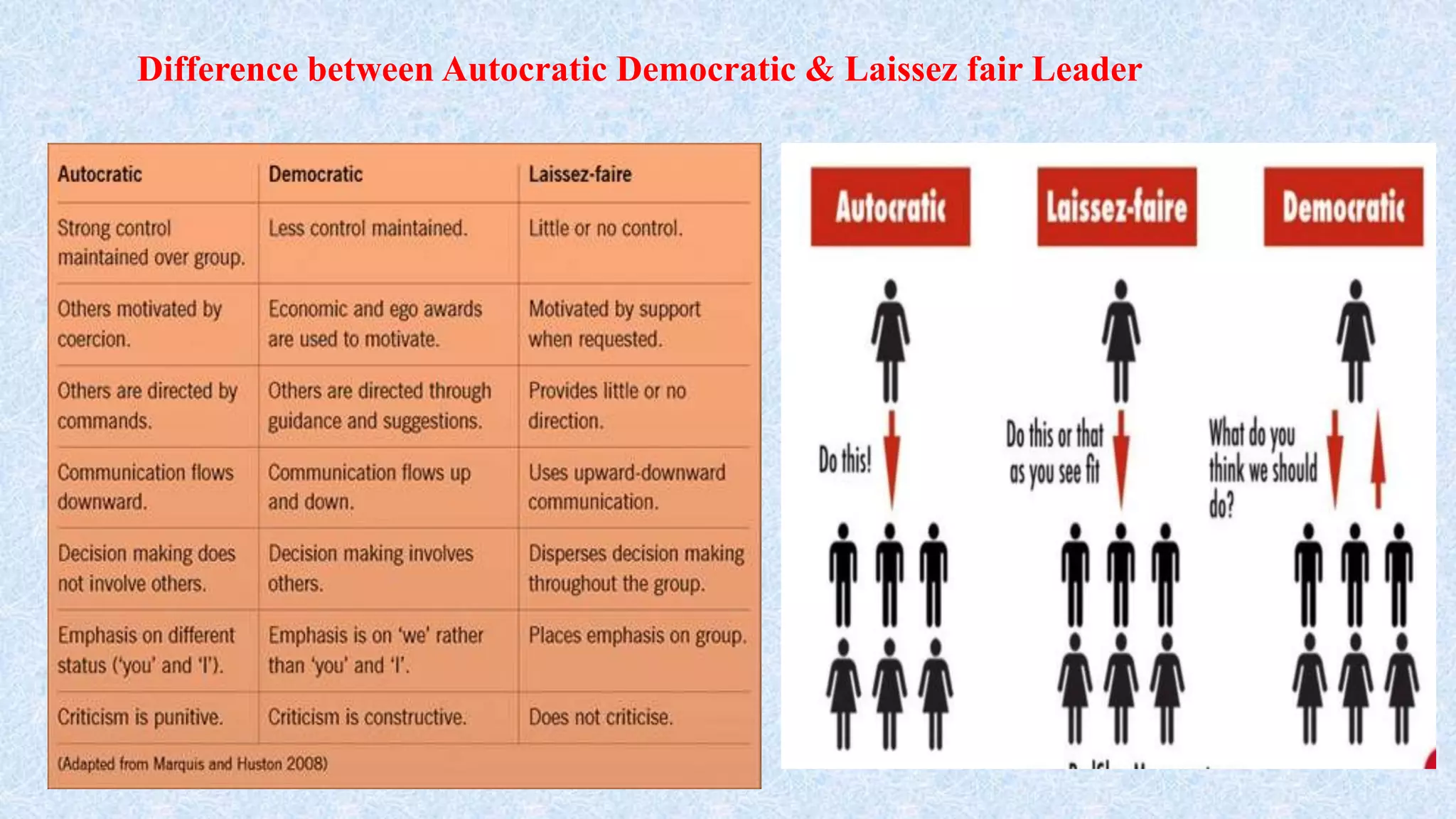
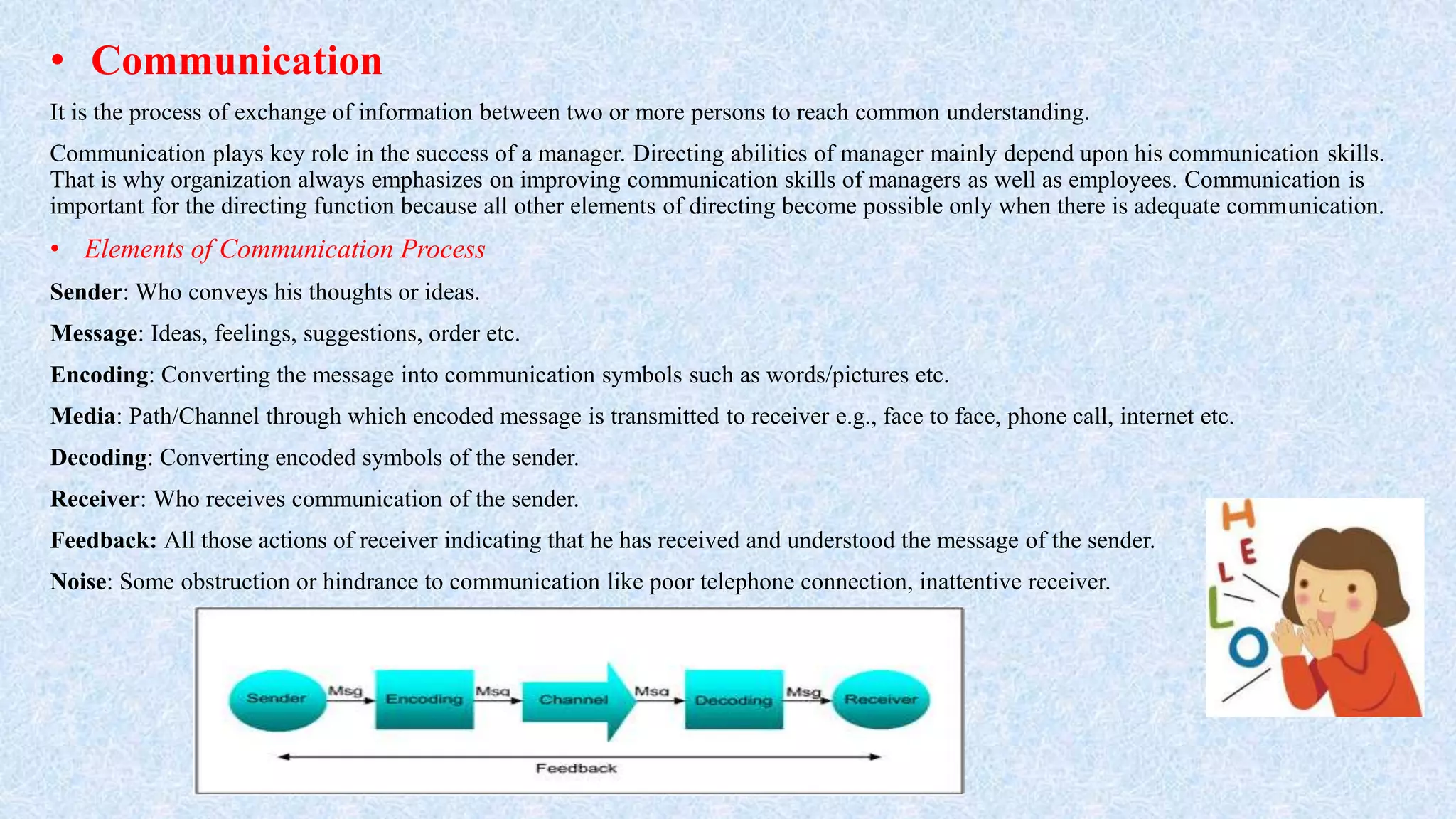
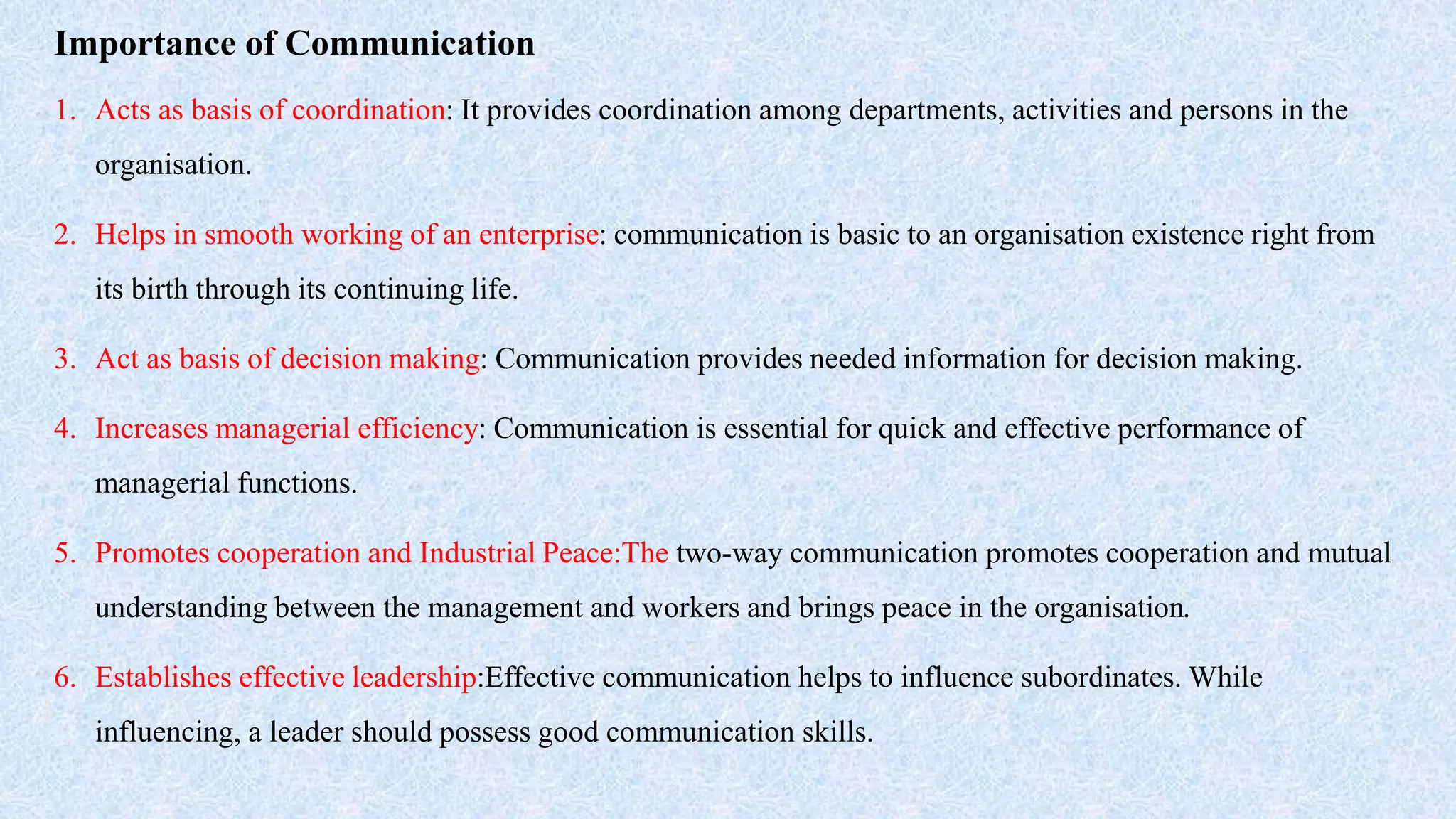
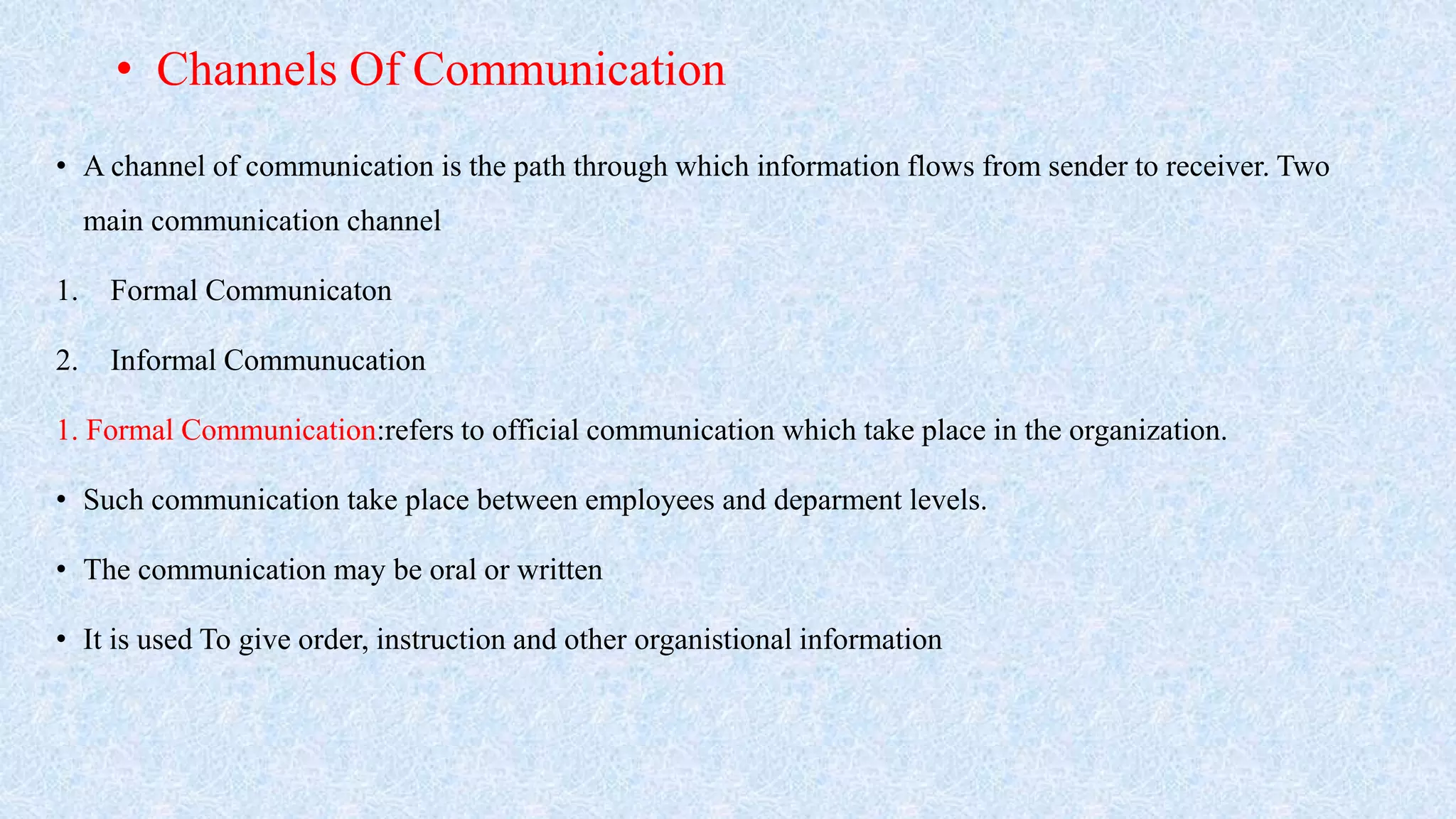
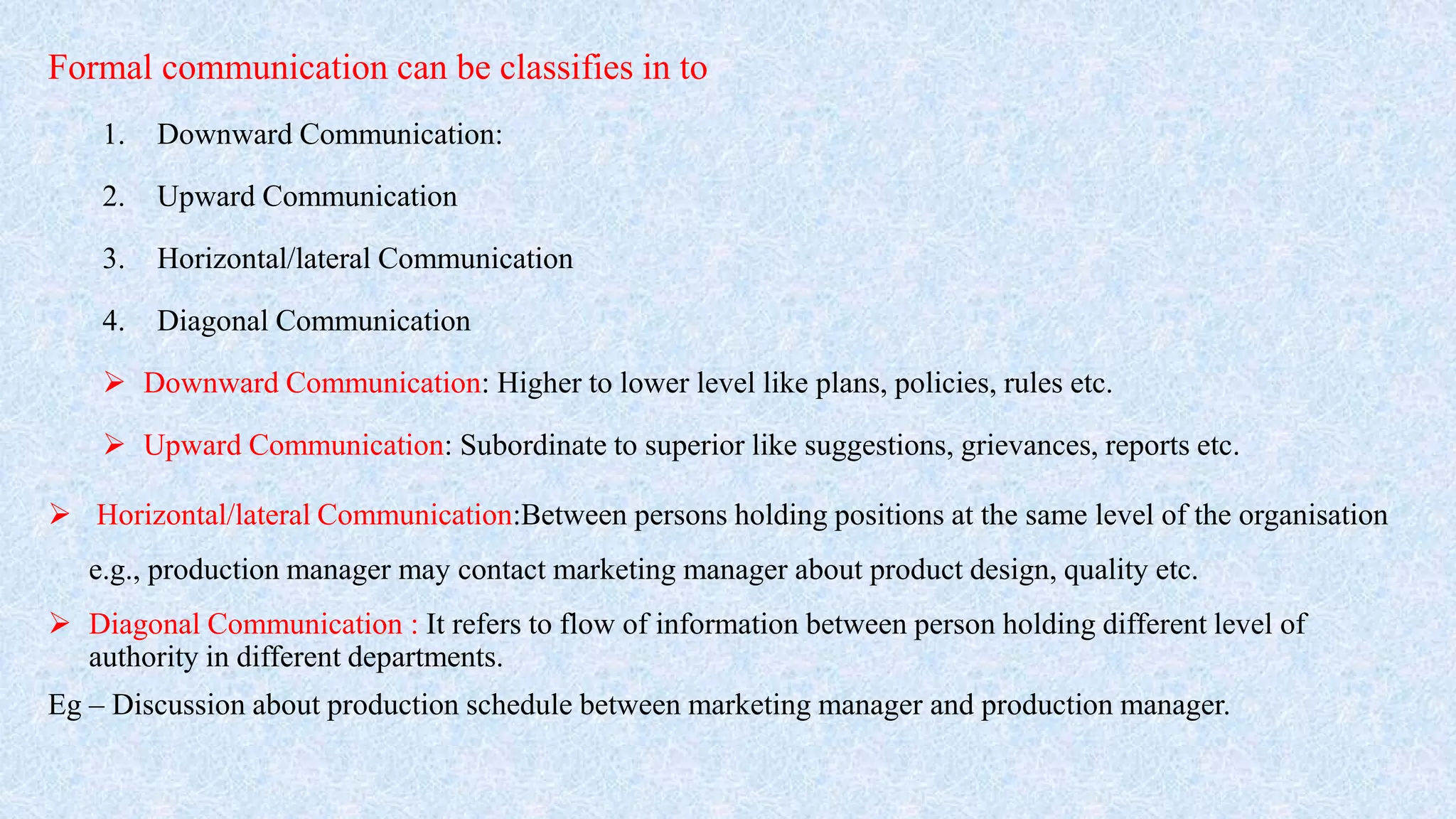
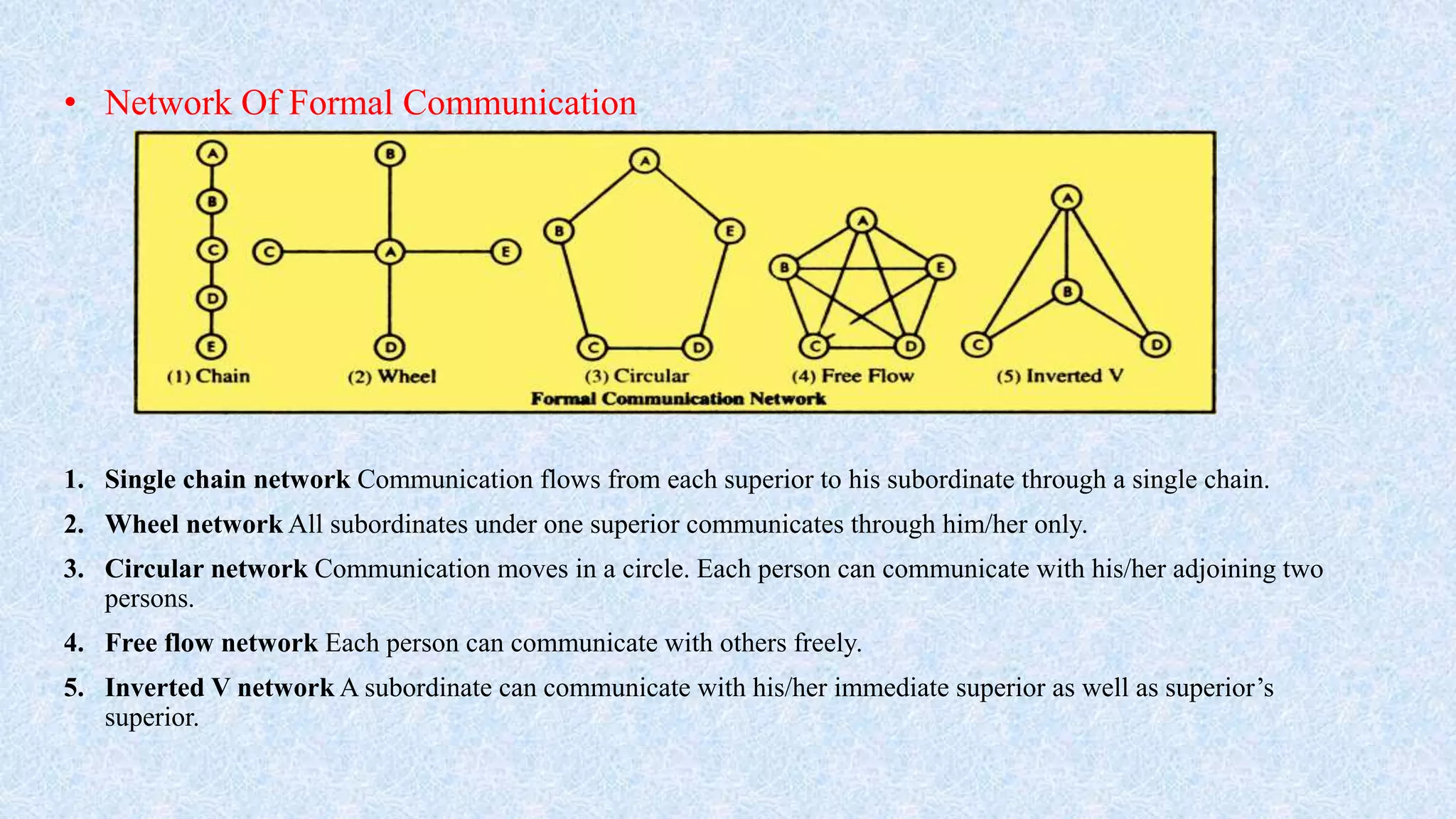
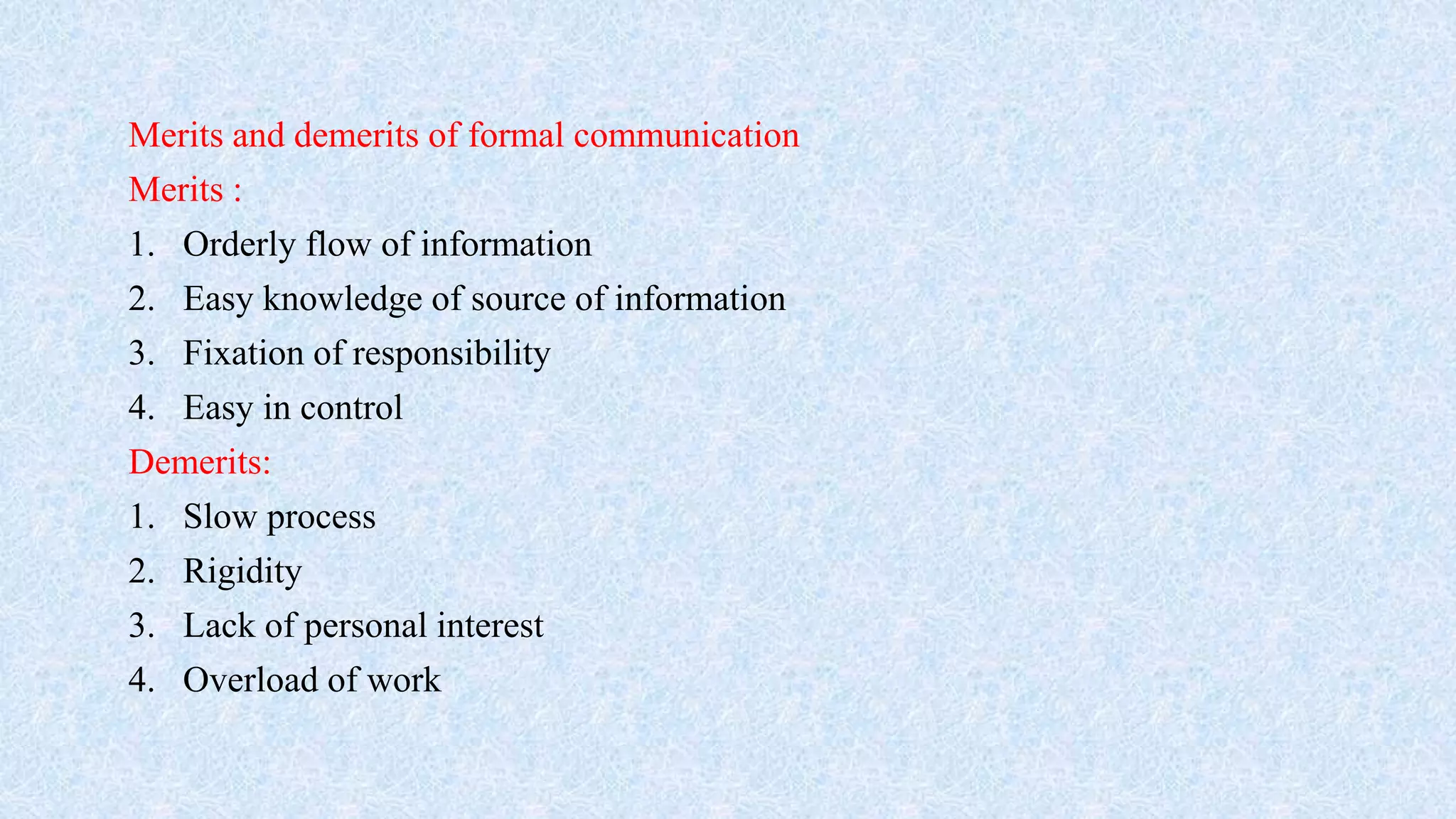
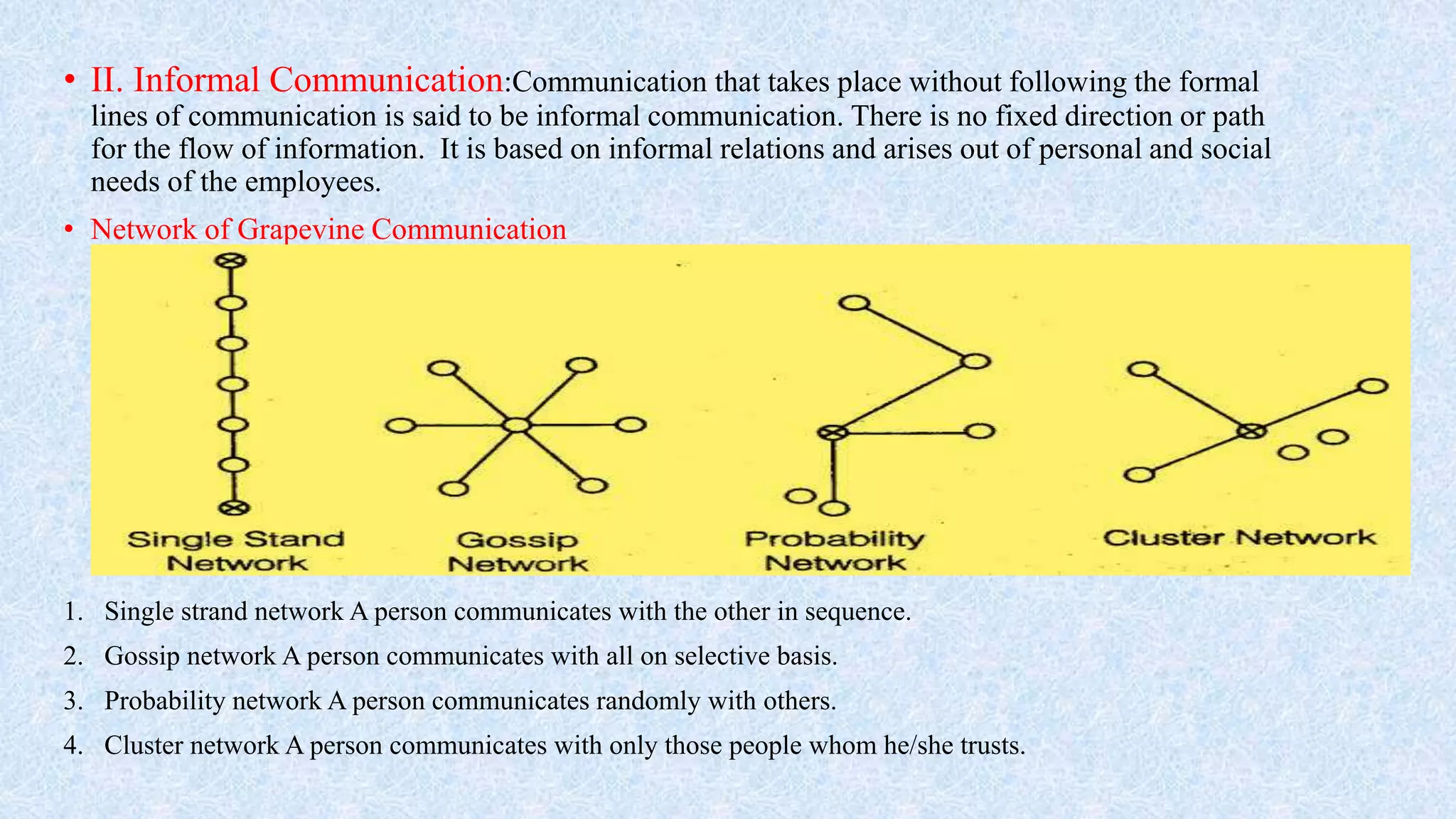

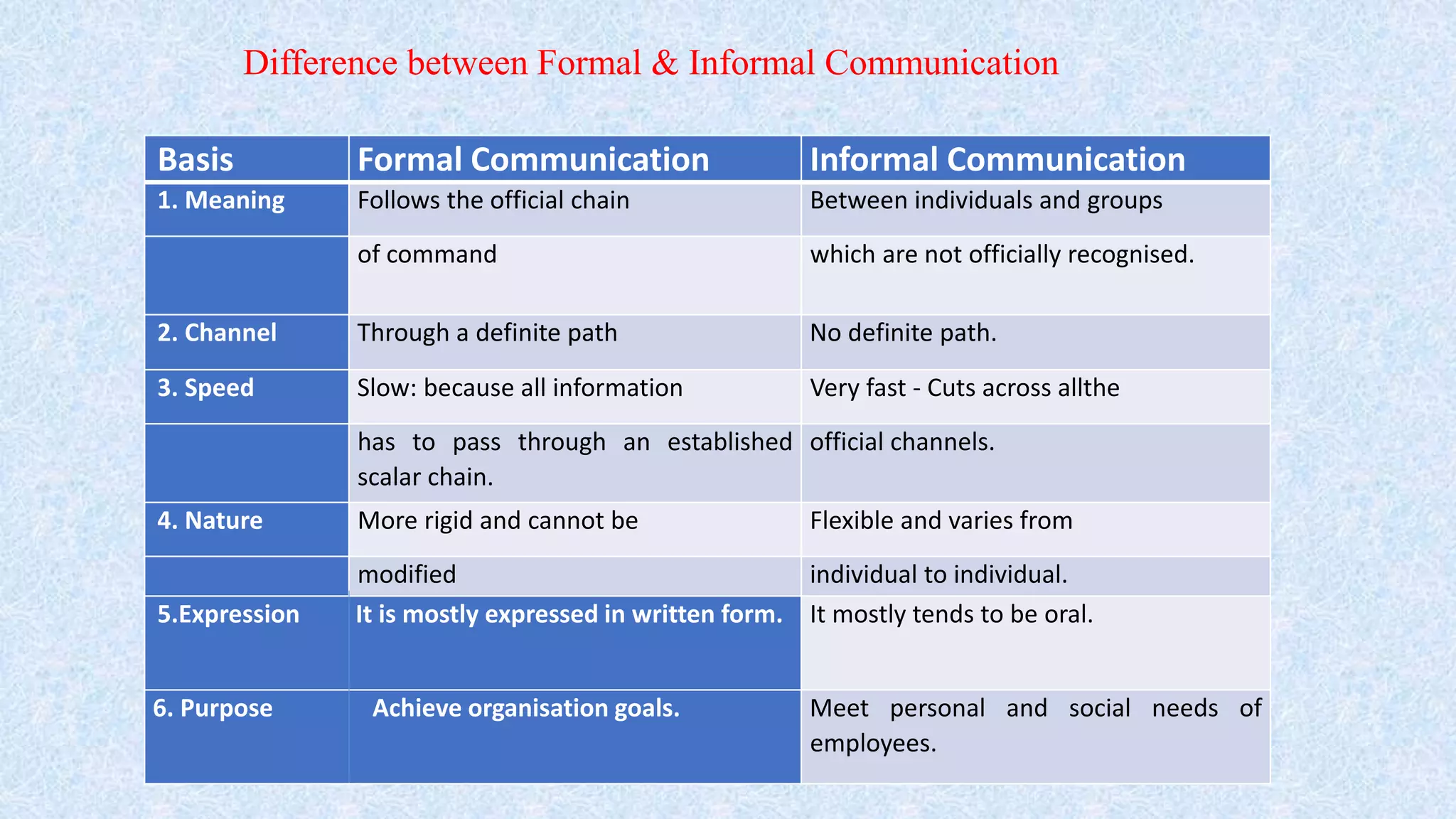
![Barriers to Effective Communication [Categories]
1. Semantic Barriers: Concerned with problems and obstructions in the process of encoding or decoding of
message into words or impressions. Semantic barriers are as follows:
• Badly expressed message: Sometimes intended meaning may not be conveyed.
• Words with different meanings confuses the receiver.
• Faulty translations may transfer wrong messages.
• Unclarified assumption: Different interpretations may result in confusion.
• Technical Jargon: Technical words may not be understood by the workers.
2. Psychological/Emotional barriers
• Premature evaluation-judgement before listening leads to misunderstanding.
• Lack of attention/poor listening may disappoint the employees.
• Loss by transmission and poor retention: When oral communication passes through various levels it destroys
the structure of the message or leads to transmission of inaccurate message.
• Distrust: If the parties do not believe each other. They cannot understand each other’s message in its original
sense.](https://image.slidesharecdn.com/7directing-230901083912-ce3f521c/75/Directing-pptx-36-2048.jpg)
